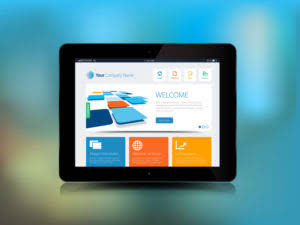Non-Billable vs Billable Hours: What They Are and How to Track Them
Posted by
–

For this purpose, they need to record the time they are spending on a project for a client in order to charge them accordingly. Every freelancer, law firm, professional services firm, or small balance sheet business owner needs to understand the importance of tracking billable hours. Billable hours are lucrative for firms—sometimes, it’s necessary for employees to reach ambitious quotas.
Trello vs Wrike vs Productive: Choosing the Best Software for Your Agency (Features & Reviews)
This knowledge not only affects revenue but also influences how time is managed and projects are structured. In this article, we will explore the definitions, importance, and implications of billable versus non-billable work to help you optimize your productivity and profitability. Tracking the number of hours worked can help ensure that clients are billed accurately for the time spent on their projects and can avoid misunderstandings or overcharges. Tracking non-billable hours gives you a complete picture of where your time goes. With that information, you can identify areas for improvement and increase your billable utilization over time. This blog post explains the meaning of billable, non-billable, and total hours worked.

The Non-Billable Tasks:

If you’re going to be tracking billable hours, it helps to have a task management software or app that can organize your client to-do list. Asana is a great tool for teams looking to “organize, track, and manage their work.” Plus, Asana integrates with hundreds of apps to create a suite of business tools. The worst thing you can do for a client is to forget a project or miss a deadline.
Consider Time Spent on Each Client

Billable hours for a particular client or project may also be pooled. That can enable more effective use of human resources and less expense to the client. For example, a project manager might have a rate of $1,000 a day but employees assigned lower rates may do much of the work for a given project. The what are billables client may be charged a combined rate based on the billable hours of all employees involved in the project.

- The House of Delegates also passed a resolution urging all legal employers to adopt policies and practices that promote flexible work arrangements.
- Scoro’s centralization has helped agencies achieve remarkable results, such as a marketing agency increasing its cash flow by 66%.
- Usually, to ensure that your teams don’t feel overly micromanaged, it’s a good rule of thumb to use a time-tracking tool that provides them with multiple options.
- Here’s the features to look for, the benefits they’ll bring, and our cream-of-the-crop top 10 software planning solutions.
- It can be especially attractive to working parents and to others who need greater flexibility in their workday.
Generally, if you can tie your work back to the client, your time is billable. This is great for agencies that are ready to incorporate more hard data into their decisions on project staffing and protecting margins. It’s ideal for growing agencies ready to take a data-driven approach to project delivery and resource allocation. And https://www.bookstime.com/ since most platforms charge per user, ProofHub stands out with their flat-rate pricing model. As the name suggests, ProofHub is ideal for managing creative projects where client proofing and input is essential.
Simplify Billable Hours Management with Workstatus
- No matter if your teams work on-site or remotely, conference calls are the staple of any team.
- For example, a speedier contract analysis process could accelerate the negotiation of a deal.
- Monthly reviews are also helpful for a broader analysis, like examining long-term trends and overall (not per-project) profitability.
- Focusing on time might incentivize inefficiency as you shift from ‘value delivered’ to ‘time spent’.
- Here is a list of tasks and activities that could get included in the average billable hours template.
For example, a change in billable hours after the implementation of a new software program can indicate how beneficial that program is to your company’s performance. Use a timesheet or time-tracking software to record your billable hours. Make sure to organize your billable hours chart according to task, project, and client. If you charge a single rate for all your services and clients, this step is straightforward. If you charge different rates for services or clients, try outlining your rates in a table to ensure clients understand what they’ll pay for different billable hours.

Get started with Traqq today
Recording your billable hours by the project will help you keep track of all your clients and the projects for each of them. After you’ve divided your salary by the number of hours, increase this figure by a little to account for the time you may spend on non-billable tasks. You should factor in your lifestyle requirements and things like vacation, personal days, and emergencies. In this article, we’ll cover everything you need to know about the billable hour model, how to set your billable rate, and how to track and increase the number of billable hours. Tracking and recording that time, invoicing for that time, and determining the productivity of that time is far more challenging. Knowing exactly who’s spending what time doing certain tasks can allow you to delegate tasks more appropriately.
Resource Guru
According to data by Forbes, of the HR leaders at organizations larger than 2,500 employees, 15% of them say burnout causes 50% or more of their annual turnover. As the cost of hiring a new employee is typically 1.25 to 1.4 times the salary (SAB), this is something you should try to avoid at all costs. An example software feature that can help you resolve this challenge is Productive’s color-coded heatmaps. After booking your employee’s time, with just a glance, you can easily check whether hours need to be reallocated and where. This approach contributes significantly to sustaining your company’s overall health and profitability while making sure that your team’s well-being isn’t being affected. That isn’t to say that it’s bad to want to optimize the time spent on non-billable hours.
Using Productive’s agency report templates, you can create a report that showcases this key agency metric for a set period of time. With custom fields, you can split your resources up by any metrics you prefer, such as team, skill, seniority, and more. This provides valuable insights into how your agency will be performing in the future, helping you create thorough plans when taking on new client projects.
Leave a Reply